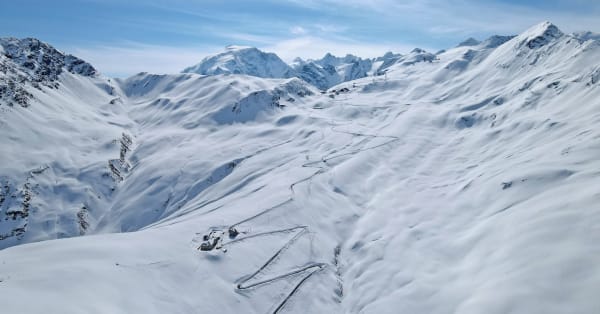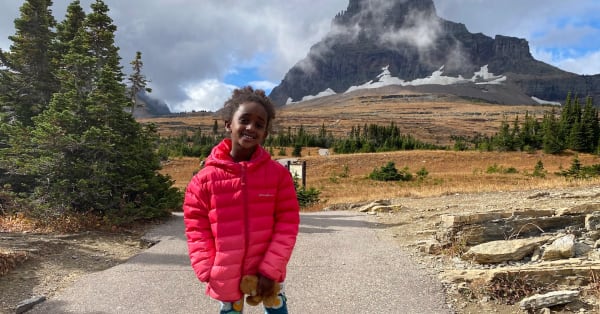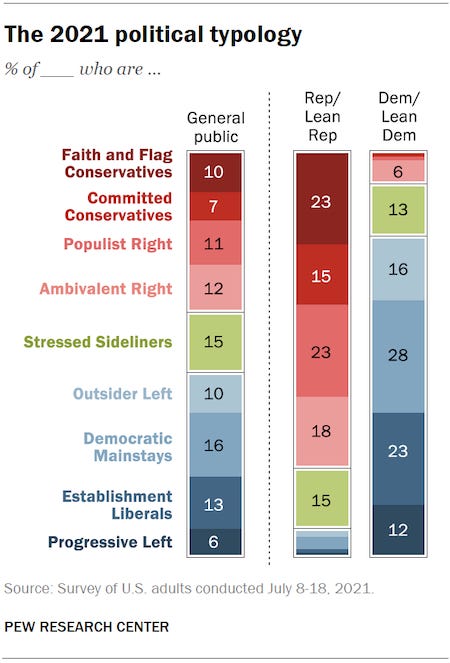Welcome to our weekend edition, a combination of the world, profiles, and good reads that you might not see during the week.
Subscriber benefit (today, 3 pm ET): What Happens Next, an extraordinary, invitation-only weekly call with academics and experts across economics, industry, medicine, history, literature, and more.
Listen & Register: Newsletter subscribers can listen to today’s call here.
The World
With the bang of a gavel, diplomats from nearly 200 countries struck a major agreement aimed at intensifying efforts to fight climate change, by calling on governments to return next year with stronger plans to curb their planet-warming emissions and urging wealthy nations to “at least double” funding by 2025 to protect the most vulnerable nations from the hazards of a hotter planet. The new deal will not, on its own, solve global warming, despite the urgent demands of many of the thousands of politicians and activists gathered at the climate summit here. It leaves unresolved the crucial question of how much and how quickly each nation should cut its emissions over the next decade. And it still leaves many developing countries far short of the funds they need to build cleaner energy and cope with increasingly extreme weather disasters. (New York Times, The Guardian)
Historians found a WWI bunker ‘frozen in time’ in the Alps. Climate change makes it a bittersweet discovery. (Washington Post)


Australia’s defense minister has said it was “inconceivable” that his nation would not support the US in a campaign to defend Taiwan from China, amid rising concerns about Beijing’s increasingly assertive military activity. Peter Dutton said that Chinese leaders had been “very clear about their intent to go into Taiwan” and that Canberra had to improve its ability to deter Beijing and be ready to join the U.S. military if it took action. (Financial Times)
China warns U.S. not to support Taiwan independence: Senior Chinese diplomat Wang Yi told U.S. Secretary of State Antony Blinken not to "send wrong signals" to Taiwan pro-independence forces. (Reuters)
Thanksgiving travel is bouncing back this year — and so are expectations for holiday travel chaos on the roads, rails and in the air. With rising Covid-19 vaccination rates and the reopening of U.S. borders to vaccinated foreign travelers, the travel industry is bracing for the upcoming holiday rush. In its holiday travel forecast, AAA said this week it expects more than 53.4 million people to travel between the period Nov. 24 to Nov. 28, up 13 percent from 2020 levels. (NBC News)
In at least two experiments over the years, Facebook has explored what happens when it turns off its controversial news feed ranking system — the software that decides for each user which posts they’ll see and in what order, internal documents show. That leaves users to see all the posts from all of their friends in simple, chronological order. Both tests appear to have taught Facebook’s researchers the same lesson: Users are better off with Facebook’s software calling the shots. The internal research documents, some previously unreported, help to explain why Facebook seems so wedded to its automated ranking system, known as the news feed algorithm. (Washington Post)
How the U.S. Hid an Airstrike That Killed Dozens of Civilians in Syria: The military never conducted an independent investigation into a 2019 bombing on the last bastion of the Islamic State, despite concerns about a secretive commando force. In the last days of the battle against the Islamic State in Syria, when members of the once-fierce caliphate were cornered in a dirt field next to a town called Baghuz, a U.S. military drone circled high overhead, hunting for military targets. But it saw only a large crowd of women and children huddled against a river bank. Without warning, an American F-15E attack jet streaked across the drone’s high-definition field of vision and dropped a 500-pound bomb on the crowd, swallowing it in a shuddering blast. As the smoke cleared, a few people stumbled away in search of cover. Then a jet tracking them dropped one 2,000-pound bomb, then another, killing most of the survivors.It was March 18, 2019. At the U.S. military’s busy Combined Air Operations Center at Al Udeid Air Base in Qatar, uniformed personnel watching the live drone footage looked on in stunned disbelief, according to one officer who was there. “Who dropped that?” a confused analyst typed on a secure chat system being used by those monitoring the drone, two people who reviewed the chat log recalled. Another responded, “We just dropped on 50 women and children.” (New York Times)
Profiles & Reads
Beyond Red vs. Blue: The Political Typology. Pew Research Center’s new political typology provides a road map to today’s fractured political landscape. It segments the public into nine distinct groups, based on an analysis of their attitudes and values. The four Democratic-oriented typology groups highlight the party’s racial and ethnic diversity, as well as the unwieldy nature of the current Democratic coalition: Progressive Left, Establishment Liberals, Democratic Mainstays, and Outsider Left. The four Republican-oriented groups include three groups of conservatives: Faith and Flag Conservatives, Committed Conservatives, Populist Right, and Ambivalent Right. The only typology group without a clear partisan orientation – Stressed Sideliners – also is the group with the lowest level of political engagement. Here are the main findings from the new political typology: 1) Racial injustice remains a dividing line in U.S. politics. 2) Democrats prefer bigger government – but how big? 3) Economic policy – including taxes – divides the GOP. 4) Republicans’ complicated views of Trump. (Pew Research Center)
Take the typology quiz yourself — Where do you fit in the political typology?
What Winter-Haters Get Wrong: Chasing the sun usually isn’t worth it. Learn to like the climate you’ve got instead. are undeniably related. Researchers have long noted what they call the “seasonal exacerbations of psychiatric symptoms”: Mood is worse and anxiety is higher when the weather turns colder and grayer. In one experiment from 1983, researchers surveyed people on days with different weather and asked them to evaluate their mood and happiness. Both were higher on sunny days than on rainy days. You might conclude that the secret to happiness is to move somewhere like Palo Alto—a place that is nearly always sunny, warm, and not too hot. Not so fast. That consistently temperate weather isn’t all for the good. People in permanently warm places tend to be happier than their cold-weather counterparts during the autumn and winter months. But in the spring, that pattern reverses. When someone says they “enjoy the change in seasons,” they probably don’t mean they enjoy digging their car out of a snowbank but rather that they get a big, noticeable happiness boost when bad weather turns into good weather… If moving somewhere warm produces such marginal and temporary gains, why is it so tempting? It turns out that people tend to think that weather matters more for their happiness than it actually does… I am not saying that no one should live in Austin or Palo Alto, but you almost certainly shouldn’t do so primarily in search of the sun. (The Atlantic)


I’ll have what you’re having: People in our social networks influence the food we eat — both healthy and unhealthy — according to a study of hospital employees. The foods people buy at a workplace cafeteria may not always be chosen to satisfy an individual craving or taste for a particular food. When co-workers are eating together, individuals are more likely to select foods that are as healthy — or unhealthy — as the food selections on their fellow employees’ trays. (Harvard Gazette)
How Neuroscience Can Help You Multitask the Right Way: Most people fail at multitasking because they choose the wrong combination of tasks. Studies show that 97.5% of people can only focus attention on one thing at a time, and there’s ample evidence that if you switch your attention from one task to another, you end up performing both tasks poorly. Still, that doesn’t mean multitasking is impossible. It’s true that focusing attention on multiple tasks at once is nearly impossible. But there are myriad productive tasks you can perform that don’t require conscious attention from your brain. Combine these tasks well, and you can indeed do multiple things at once without sacrificing your performance or burning yourself out. With a trick I’ll share below, you can even add in a third task without issue. Multitasking is possible for nearly everyone. To do it right, though, you need to choose the right tasks, know yourself, and understand how your brain processes different kinds of information. Here’s how. (Forge)


How a 12-Year-Old From New Jersey Became the Youngest Chess Grandmaster Ever: Abhimanyu Mishra and his father booked one-way tickets to Hungary for a chance at history. ‘You will never be 12 years old again.’ Once Abhimanyu Mishra and his father bought one-way tickets to get them from Englishtown, N.J., to Budapest, there was no turning back. The pandemic was still raging, but that tiny pathogen didn’t stop the countdown clock separating a 12-year-old boy known as Abhi from history.
Mishra was on a mission to become the youngest ever chess grandmaster.
“It was very scary and we knew it was a big risk,” Abhi said. “But we needed more tournaments. We had to try it.” (Wall Street Journal)


Listen, Watch, Read
I’m introducing this new periodic feature to the Weekender — a recommended podcast, video & book. Let me know what you think (and send me your own suggestions) by replying to this email.
Listen: Stratechery’s Ben Thompson talks with his Dithering podcast partner John Gruber on Gruber’s solo podcast The Talk Show. Got that? Doesn’t matter. Here’s what you need to know: Ben Thompson on the metaverse. (The Talk Show)
Watch: Iceland roasts Facebook in tourism ad promising ‘Enhanced Actual Reality’. A video advertises the “Icelandverse” as a magical place where “water is wet” (CR note: If you think the metaverse is overdone, it seems Iceland agrees with you. This is well done). (Washington Post)
Read: Overwhelmed by Social Media, Cybersecurity and Other Tech Topics? Read These Books. We asked experts what nontechies can read to get their arms around some of the biggest issues in technology. Here are their recommendations. (Wall Street Journal)
“AI 2041: Ten Visions for Our Future,” by Kai-Fu Lee and Chen Qiufan (2021)
“The Code Breaker: Jennifer Doudna, Gene Editing, and the Future of the Human Race,” by Walter Isaacson (2021)
“Skunk Works: A Personal Memoir of My Years at Lockheed,” by Ben Rich and Leo Janos (1994)
“Race After Technology: Abolitionist Tools for the New Jim Code,” by Ruha Benjamin (2019)
“Post Corona: From Crisis to Opportunity,” by Scott Galloway (2020)
“Terra Ignota,” a quartet of novels by Ada Palmer (2016-2021)
“An Ugly Truth: Inside Facebook’s Battle for Domination,” by Sheera Frenkel and Cecilia Kang (2021)
“Weapons of Math Destruction: How Big Data Increases Inequality and Threatens Democracy,” by Cathy O’Neil (2016)
Good News
A girl lost her teddy bear in a national park and hoped for a miracle. A ranger helped reunite them. (Washington Post)


An emotional support duck ran the New York City Marathon in custom webbed sneakers. "She is fast. She is speed. She is zoom," Wrinkle the duck's owner wrote on YouTube, sharing video of the bird running the 50th New York City Marathon. (People)
Have a great Sunday! Subscribers support the creation of the newsletter, podcasts & live events.






